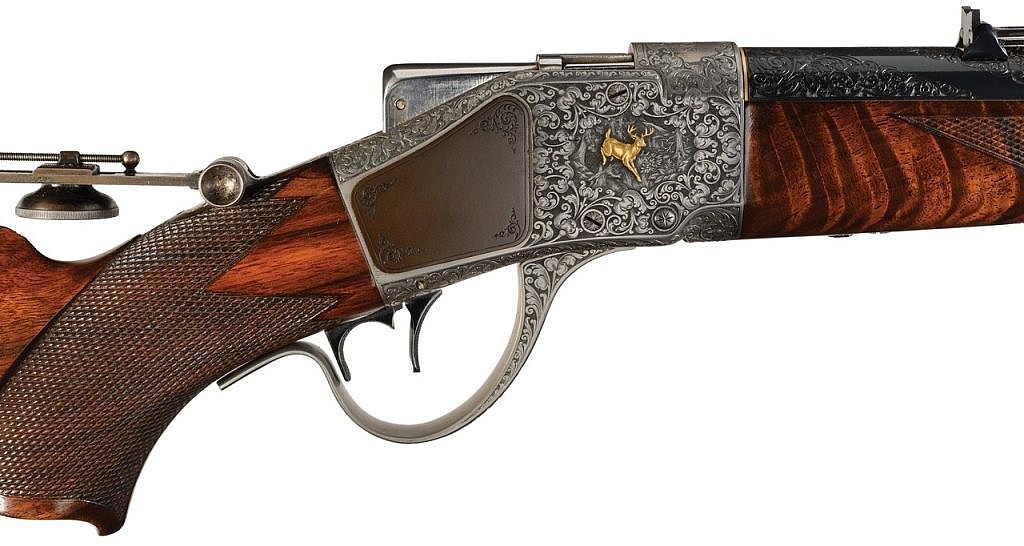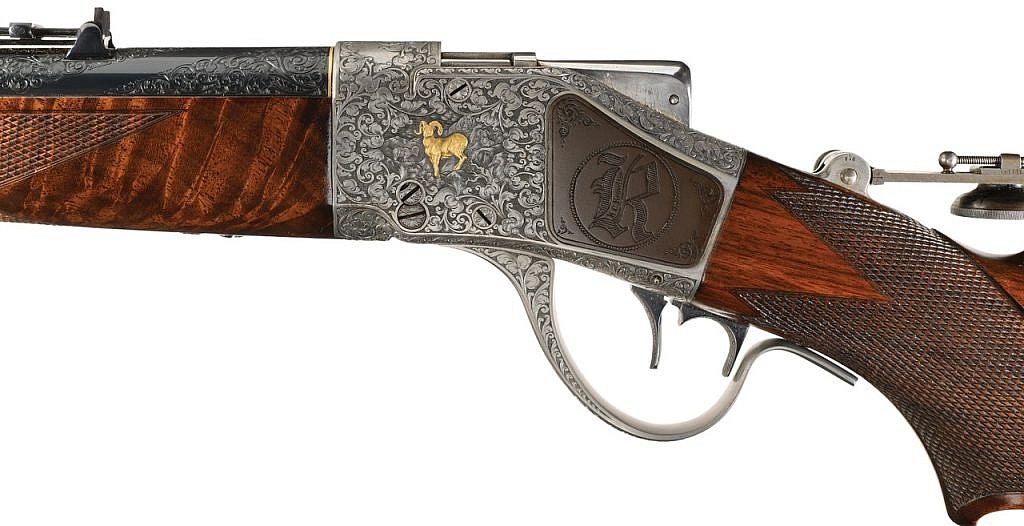
by David E. Petzal
On July 31, at age 83, Winston Churchill of Proctorsville, Vermont, went to a world where his eye will always be sharp, his hand steady, and time will not matter. He was, arguably, the greatest American gun engraver of the 20th century. For a certainty, during a career which began in 1973 and ran for 30 years, there were only four other engravers in the world who could be mentioned in the same breath.
Churchill, the son of a farmer, grew up if not in poverty, then in something very close to it. It colored the way he thought for the rest of his life. After high school he served in the Navy, and then worked for a local Vermont engraver. But this was not to be his future. In June, 1969, he went to New York City, to Griffin & Howe, showed G&H’s manager, Leo Martin, what he could do, and was hired on the spot. His object was to work with G&H’s long-time in-house engraver, Josef Fugger, a master of the art, and Fugger was more than generous with his new acolyte. (A side note: Every day for the four years he was at G&H, Churchill lunched on a sandwich made by his wife Fran, that never varied. It was salami on whole wheat bread spread with horseradish sauce and sliced onion sprinkled with chili powder. Its gastric side effects were world-altering.)

Fugger, like nearly all makers of custom guns and engravers of same, was underpaid. The prevailing attitude among shooters was, “Why should I pay a lot of money for a custom rifle when I can buy a new Model 70 for $250?” When you factor in the skill and artistry these men brought to the job, it was grotesque. Churchill had seen enough of poverty, and so in the autumn of 1973, as his reputation grew, he left G&H and returned to Proctorsville to rise or fall on his own.
Churchill had the gall to charge what his work was worth. Some people were appalled. Others reflected that the guy was better than anyone else, and wrote checks. The concept spread. I believe that the first rifle maker to subscribe to the New Order of Things was David Miller of Tucson, Arizona, and I think that in the early 1980s, he was charging something like $7,500 for a plain hunting rifle, which was almost inconceivable at the time.
Churchill was both talented and lucky. He went freelance at the beginning of the Golden Era of Custom Rifles, and his name and reputation spread quickly. As time went on, he was able to confine his work to major projects, for clients he knew and trusted, and at prices only the very privileged could afford. He would take your new Holland & Holland double, for which you had just paid $55,000, and put $100,000 worth of engraving and gold inlay on it. And thus it was for most of his career. It’s an accurate guess that he signed his name to no more than 35 major projects in all that time.
For engravers, it’s the eyes that end your career. Hour upon hour of working in the minutest detail takes its toll, and then you have to find something else. With Churchill, it was sculpture and nature photography, and he excelled at both right into old age.
What made him special? There is a grace, and a three-dimensional quality to his work that makes even the work of someone like Fugger look flat and stiff and lifeless in comparison. This can’t be taught. Of the engravers I’m familiar with, only the Australian Lynton McKenzie (who was a good friend) and the English engraver Ken Hunt could bring that same life to a piece of steel.
And so he is gone, but not really, no more than any great artist is gone so long as his work survives. And down through the years, people will look at what he created with a few simple tools and his skinny, incomparably talented fingers, and say, “My God, look at what that man could do.”
Is that dead? Not nearly.
David E. Petzal was able to get an interview with rifle-building great Jerry Fisher only after Winston Churchill, who was Fisher’s close friend, attested that he was not some hunyak trying to promote a free rifle for himself.
